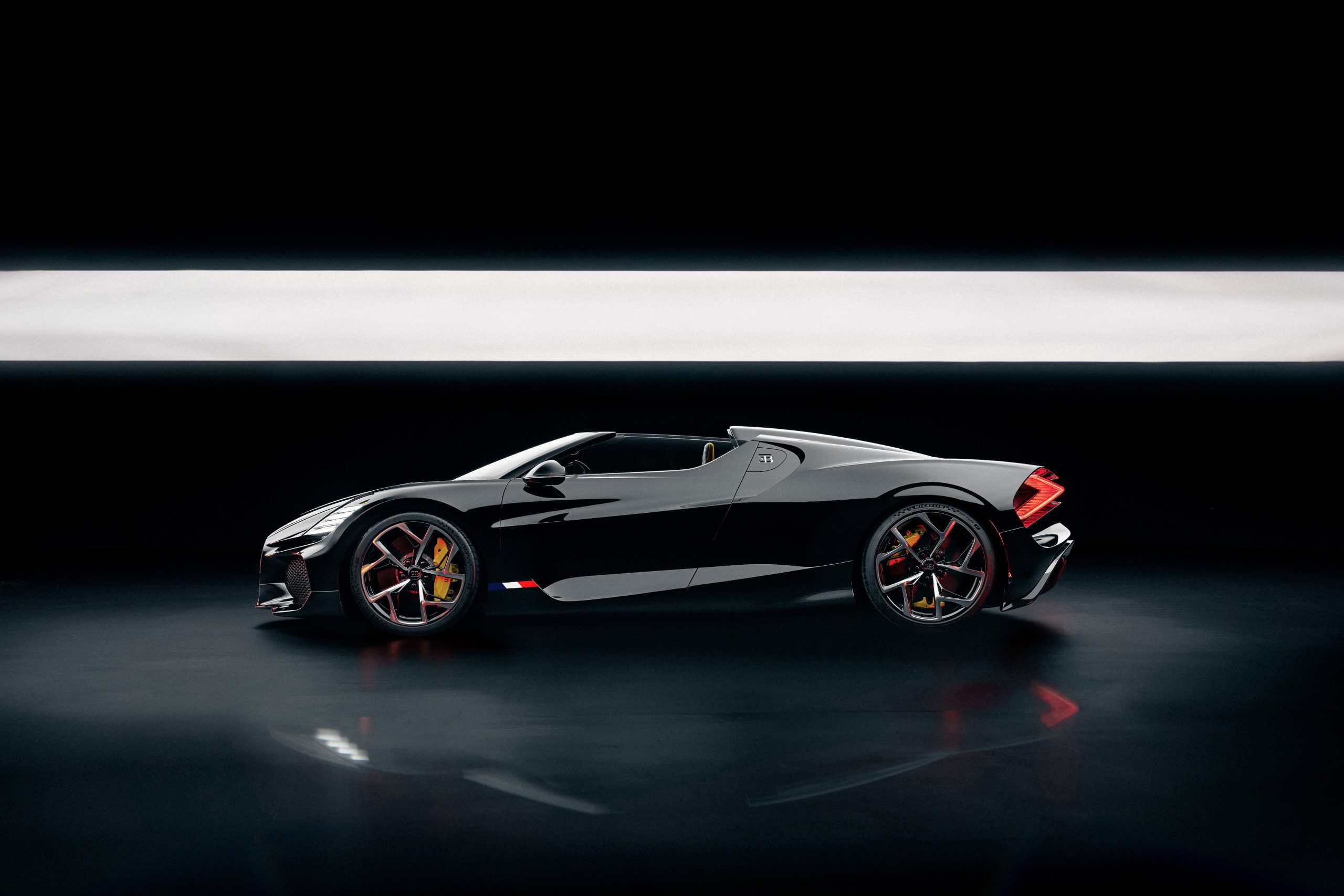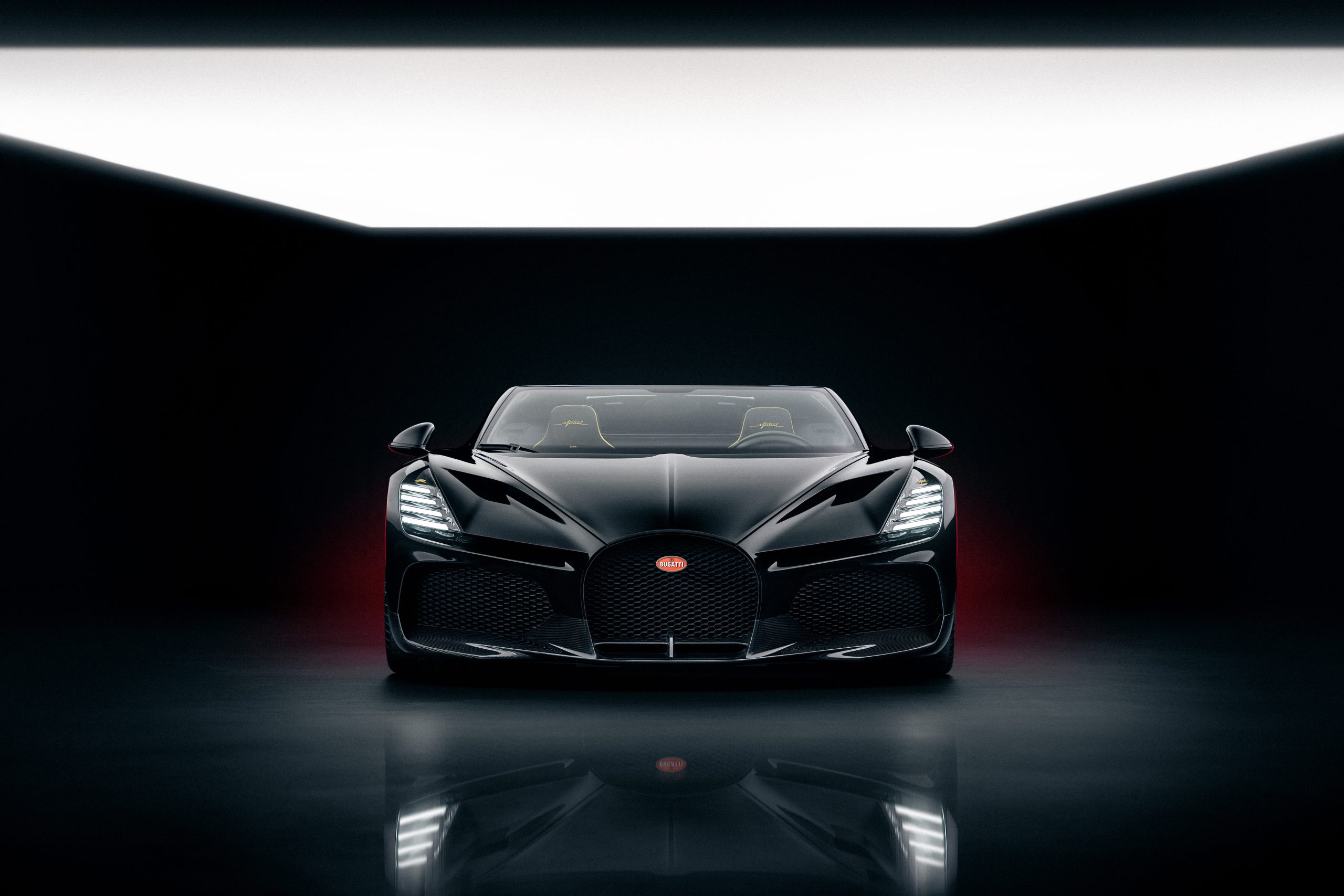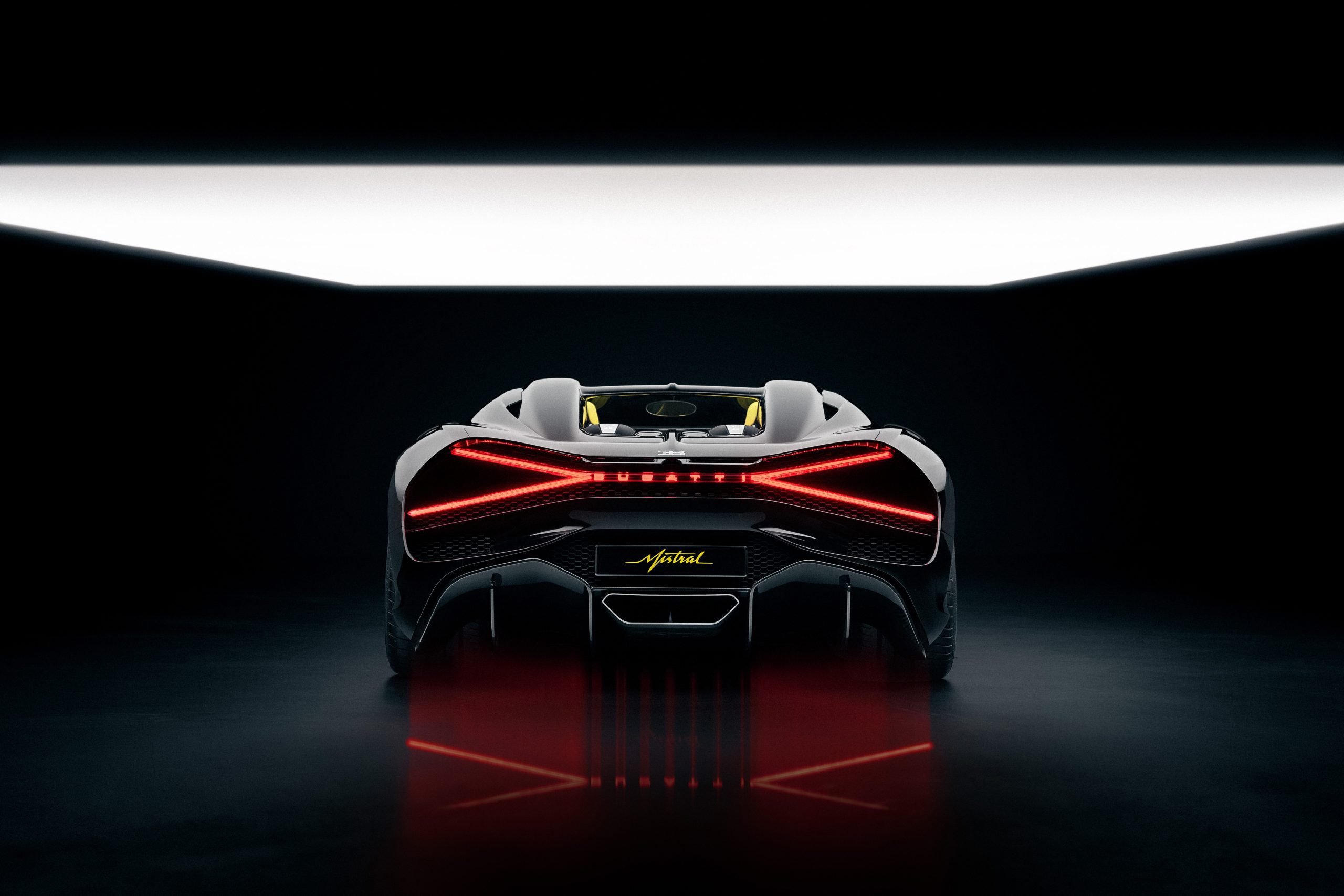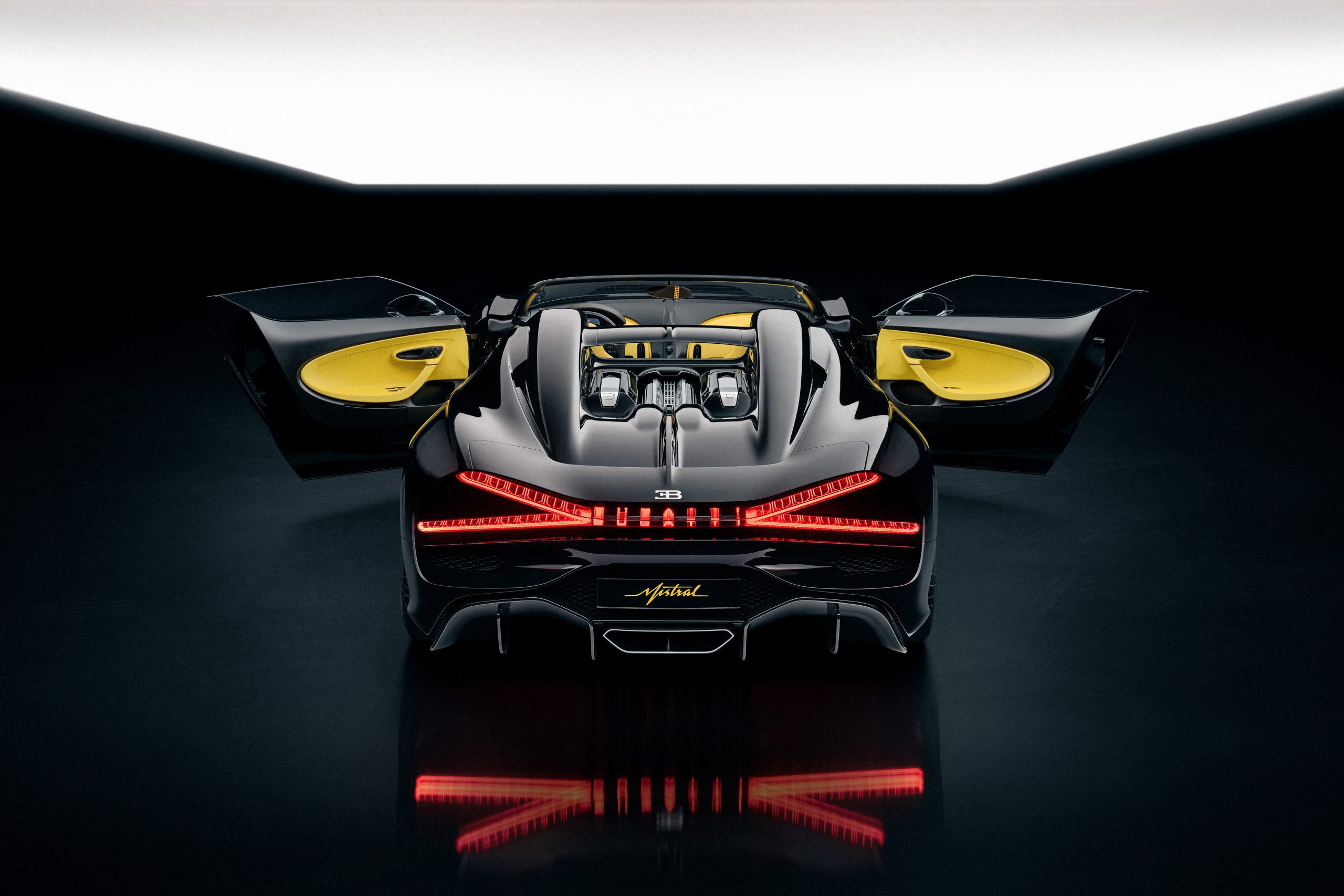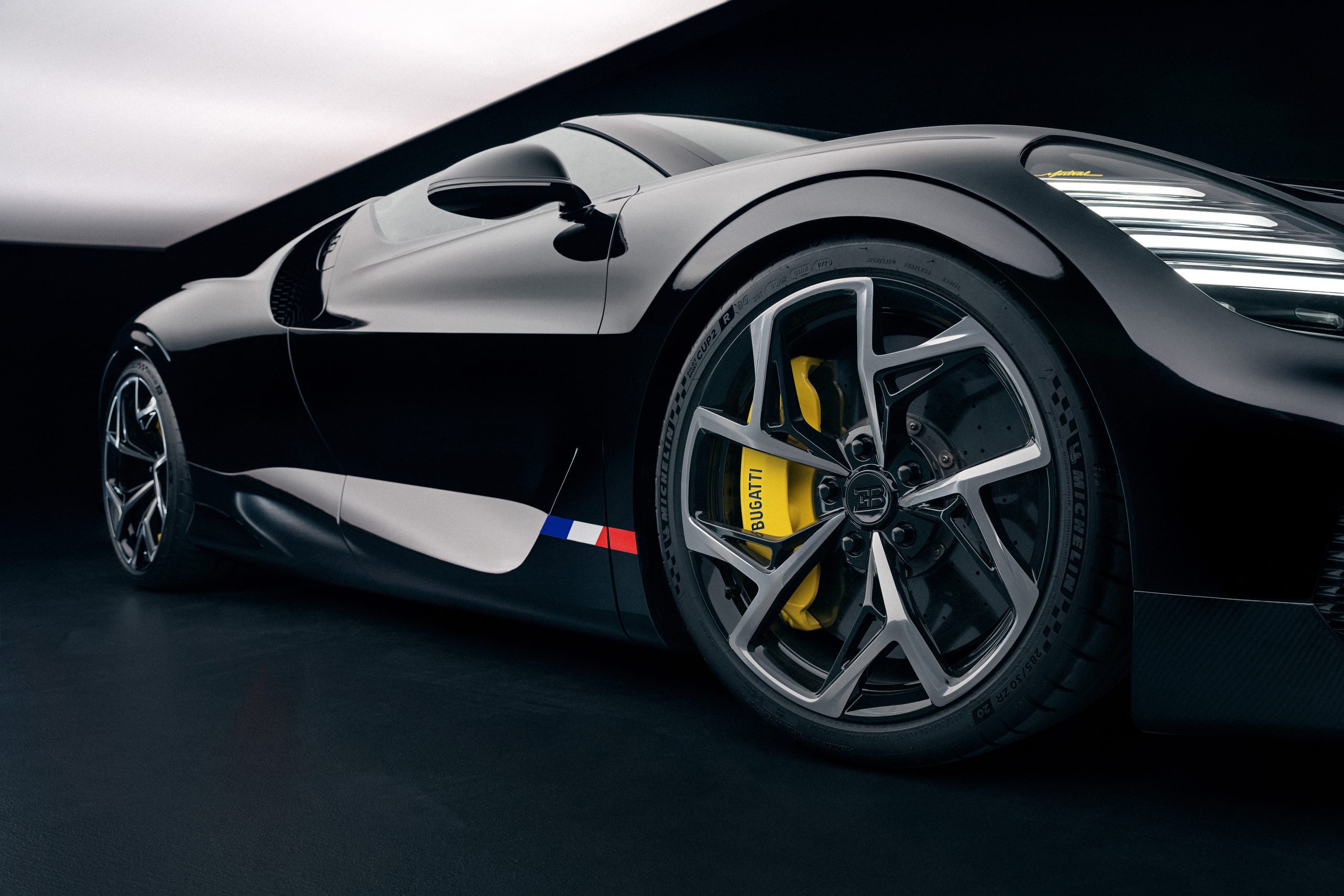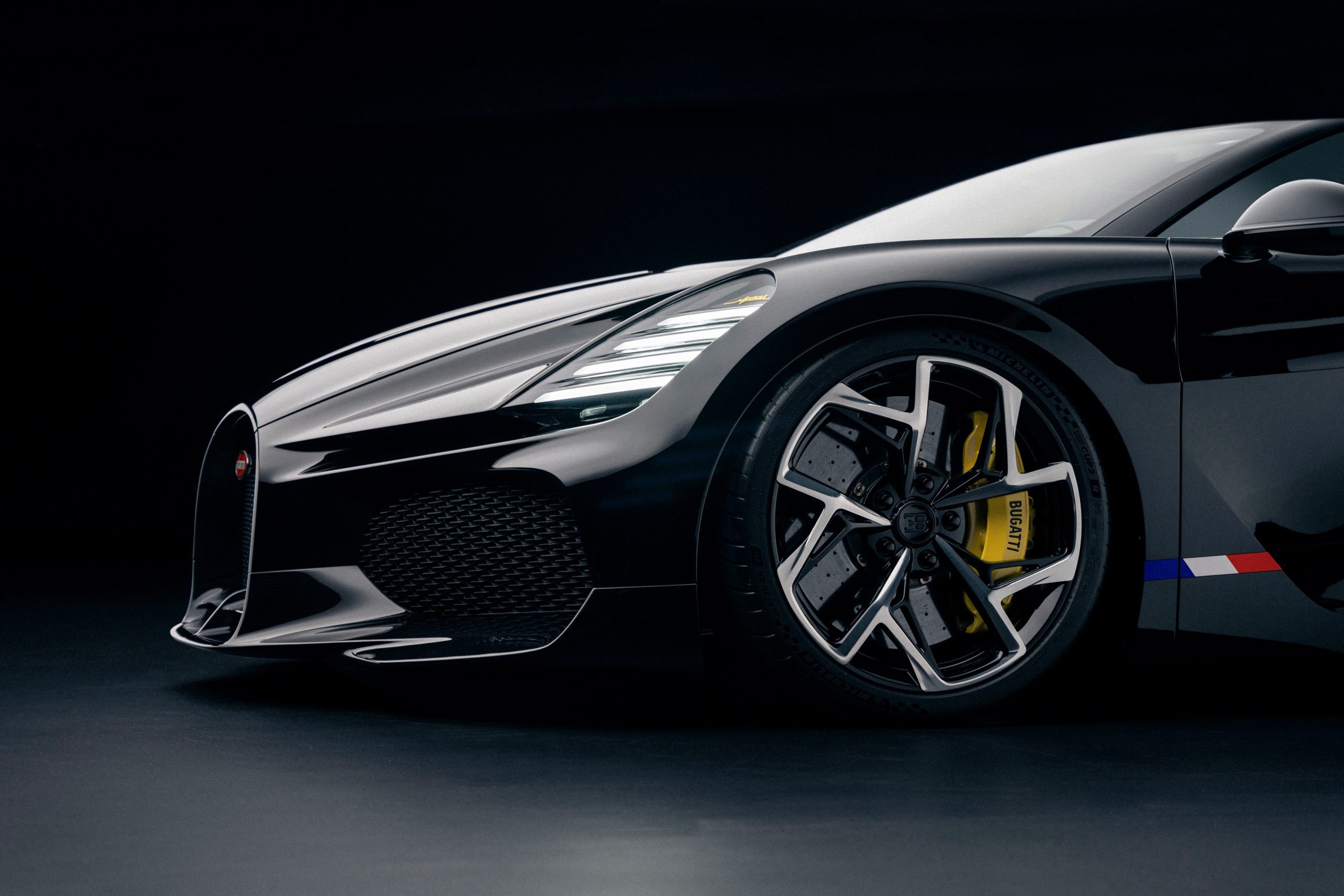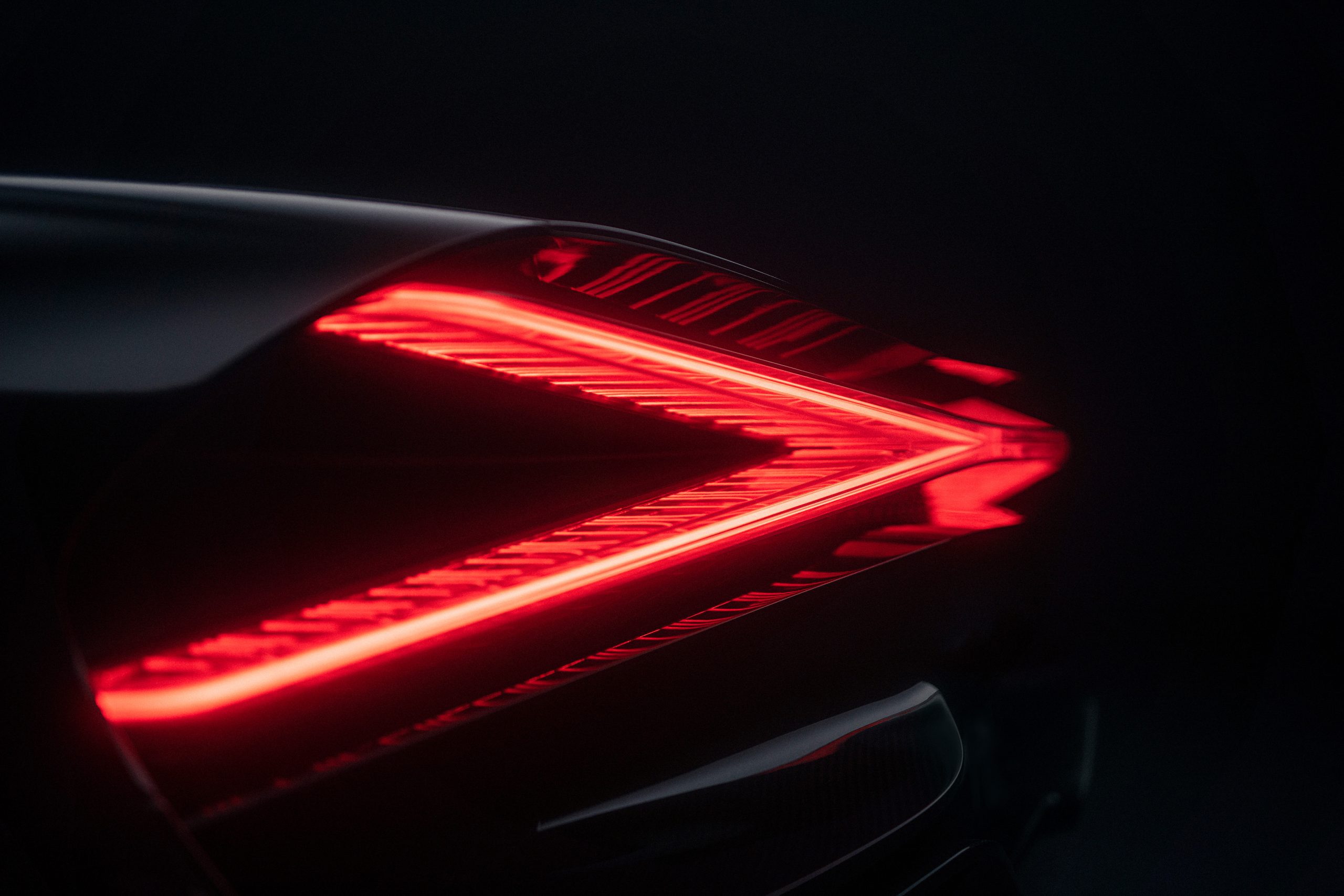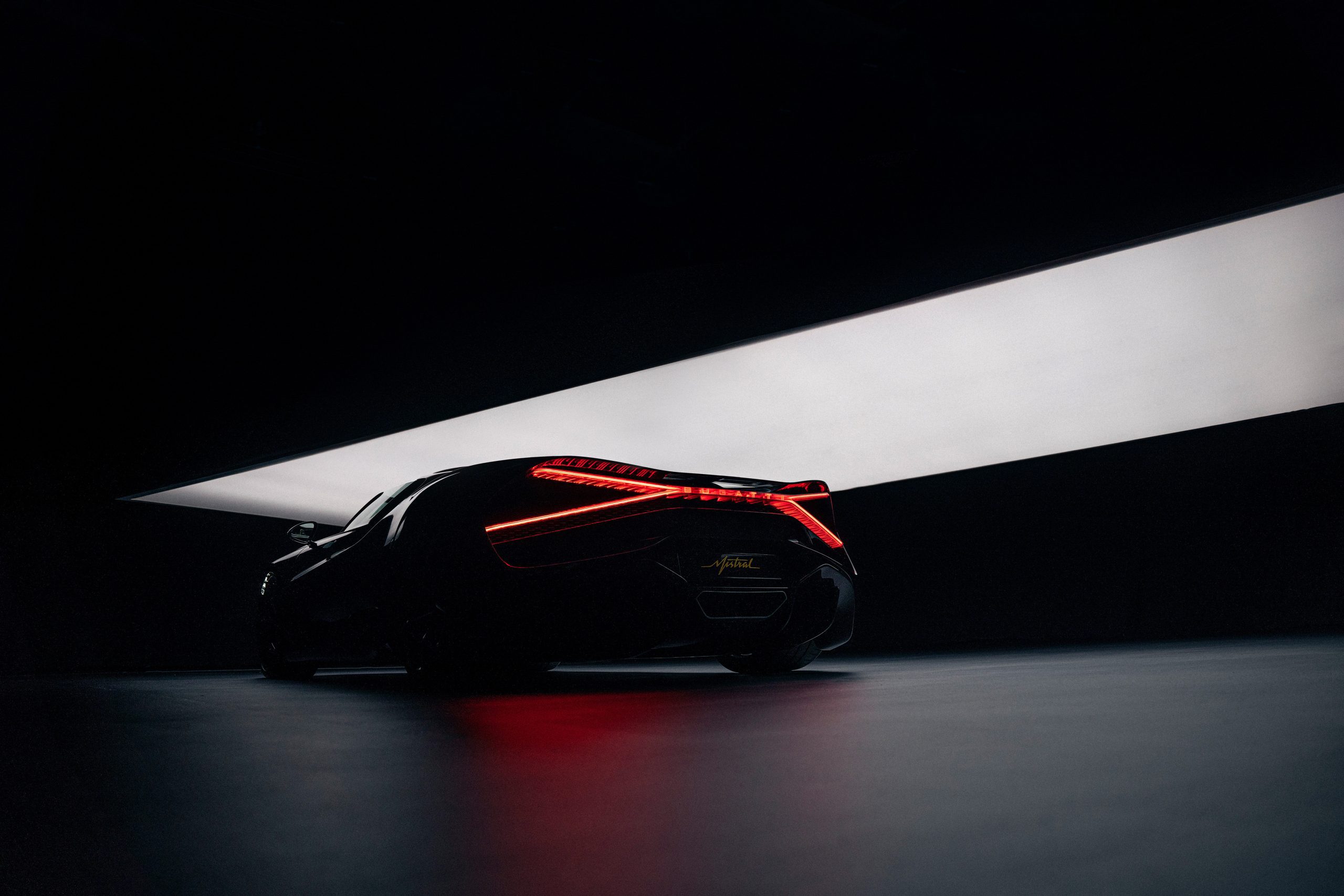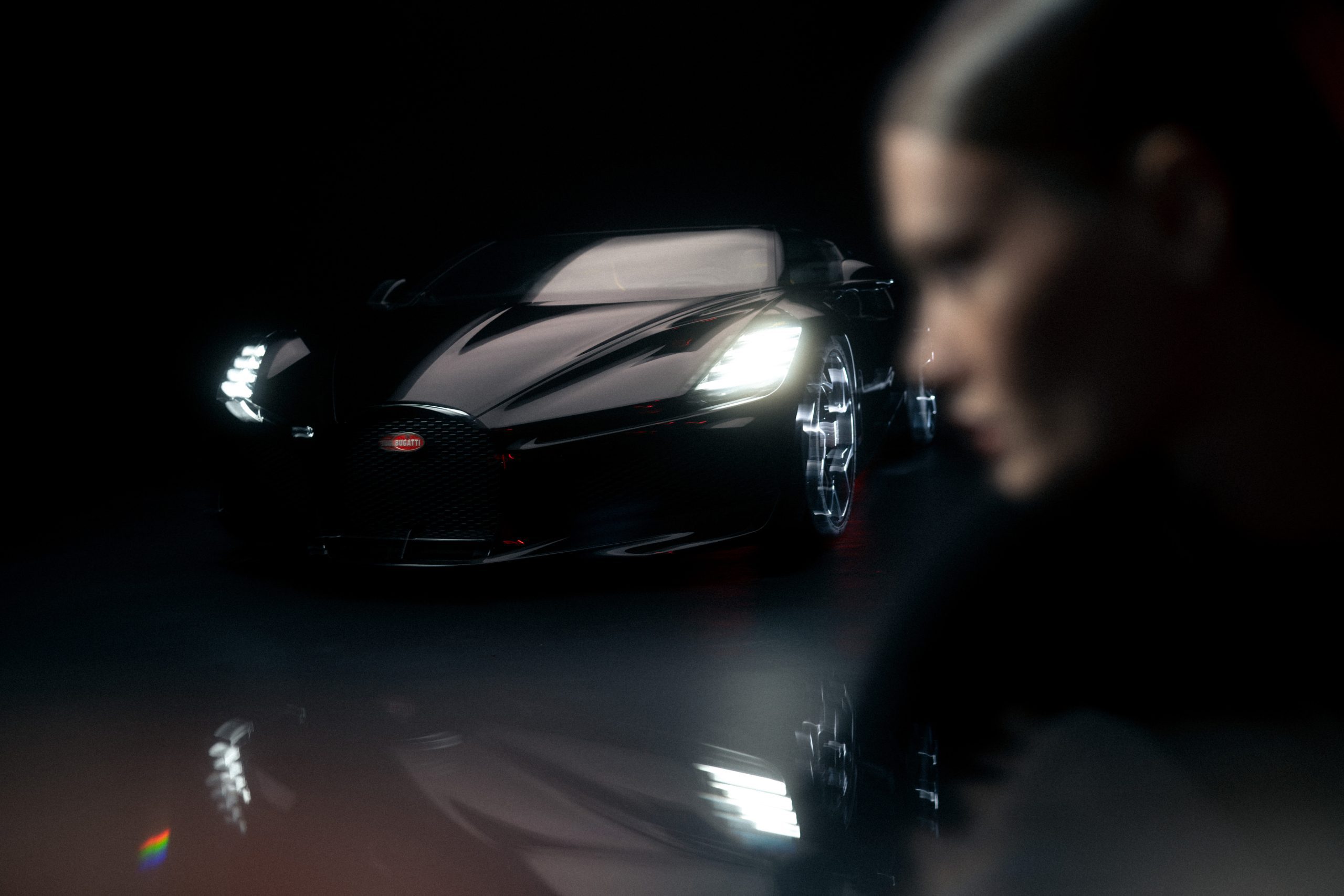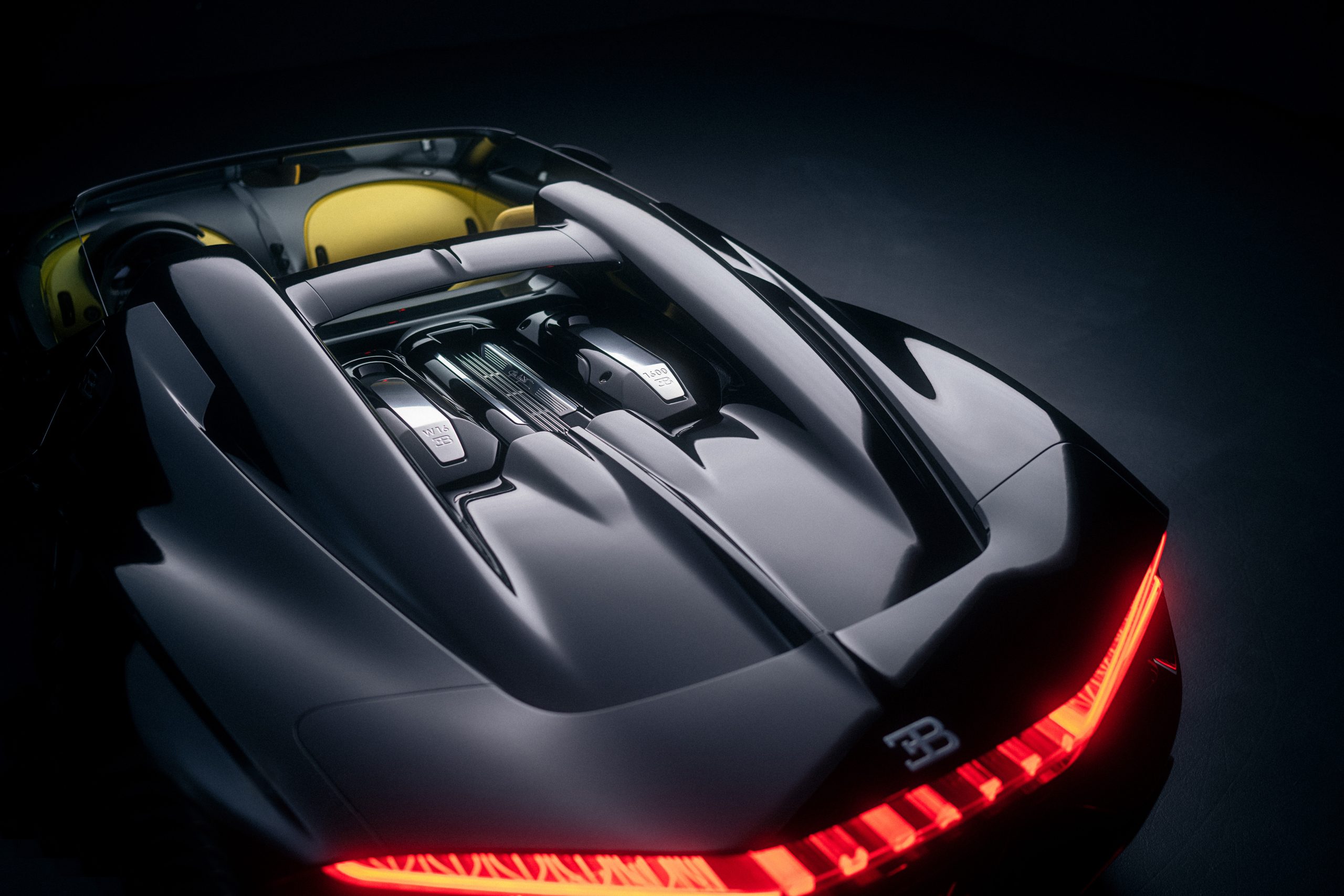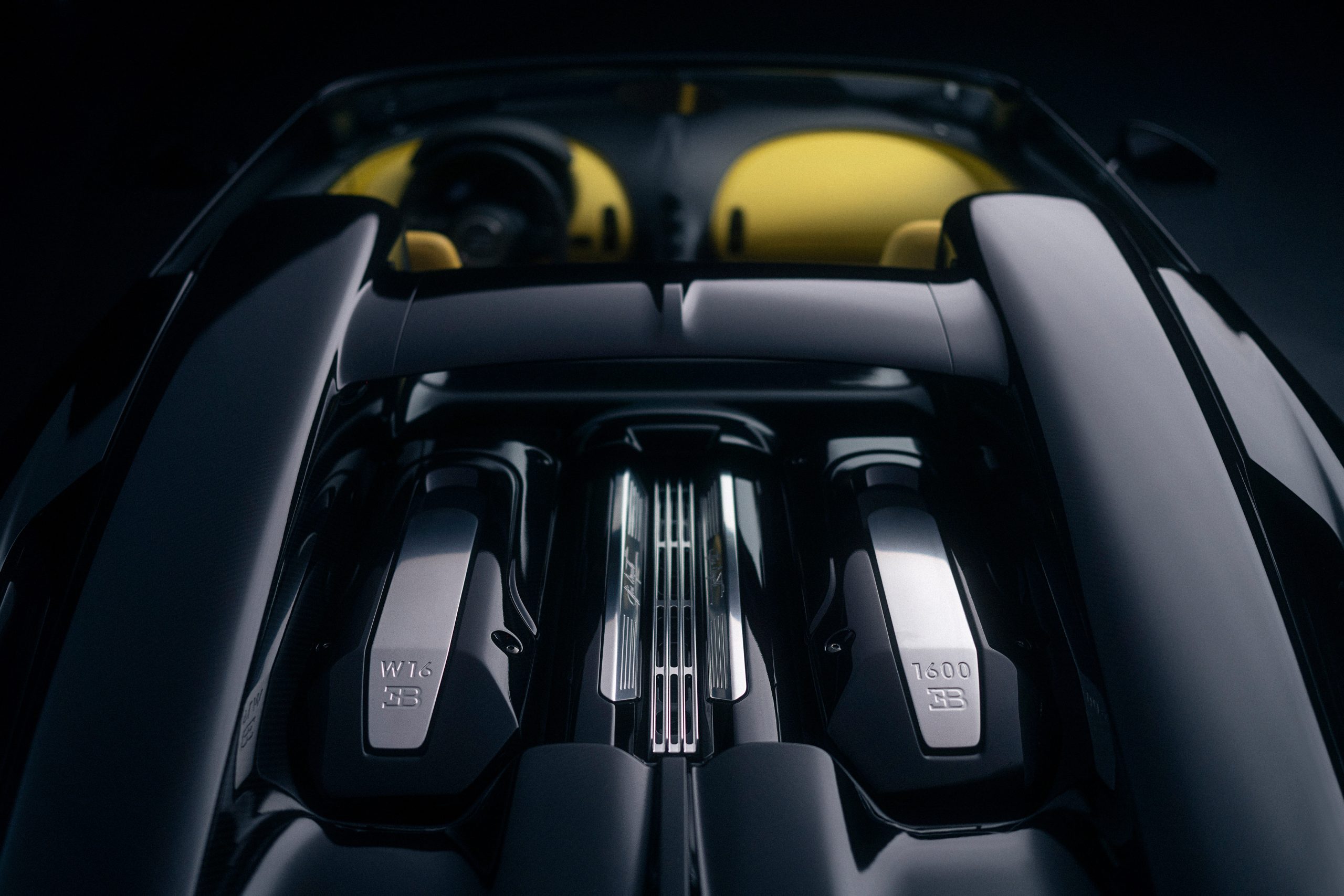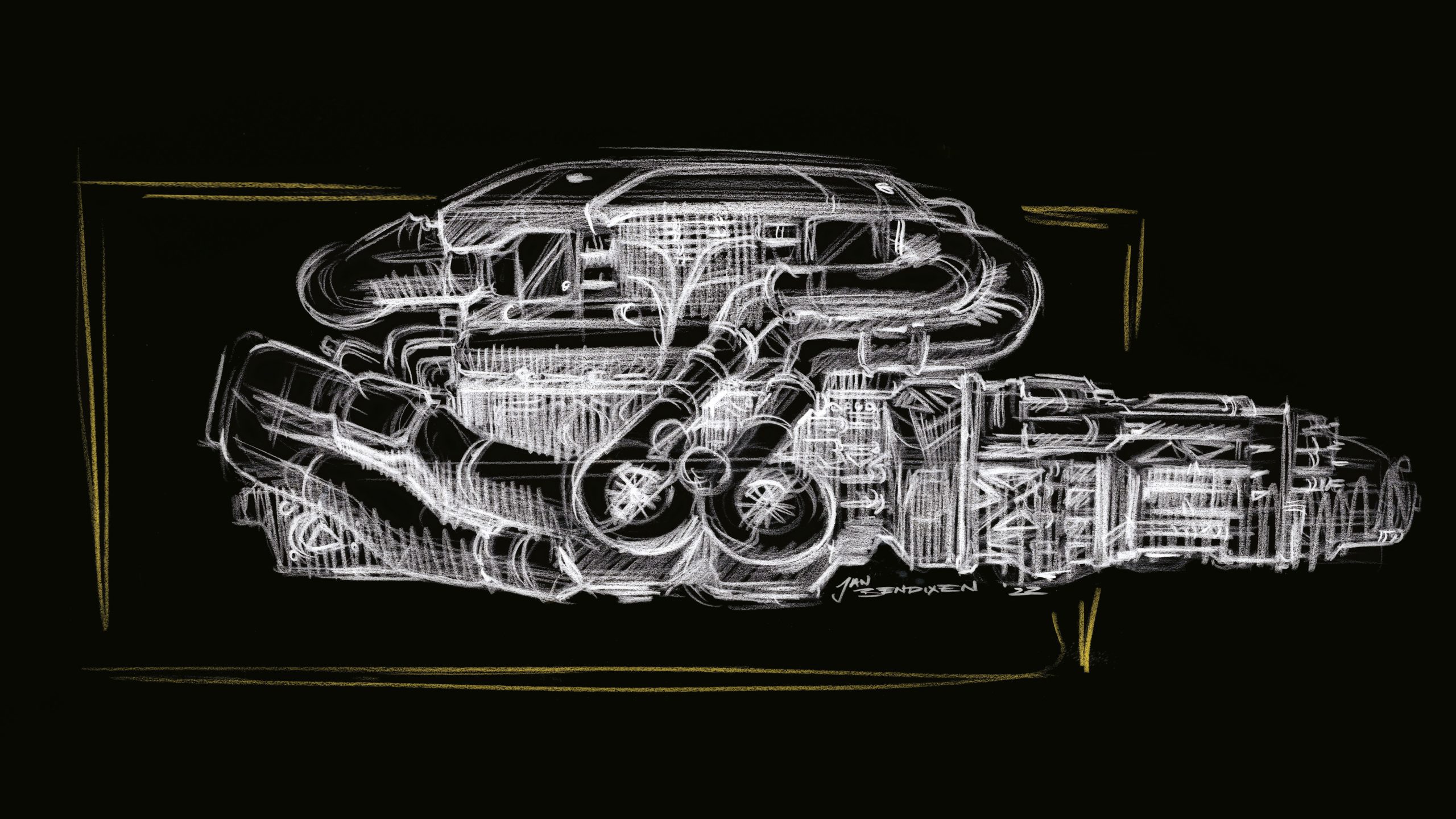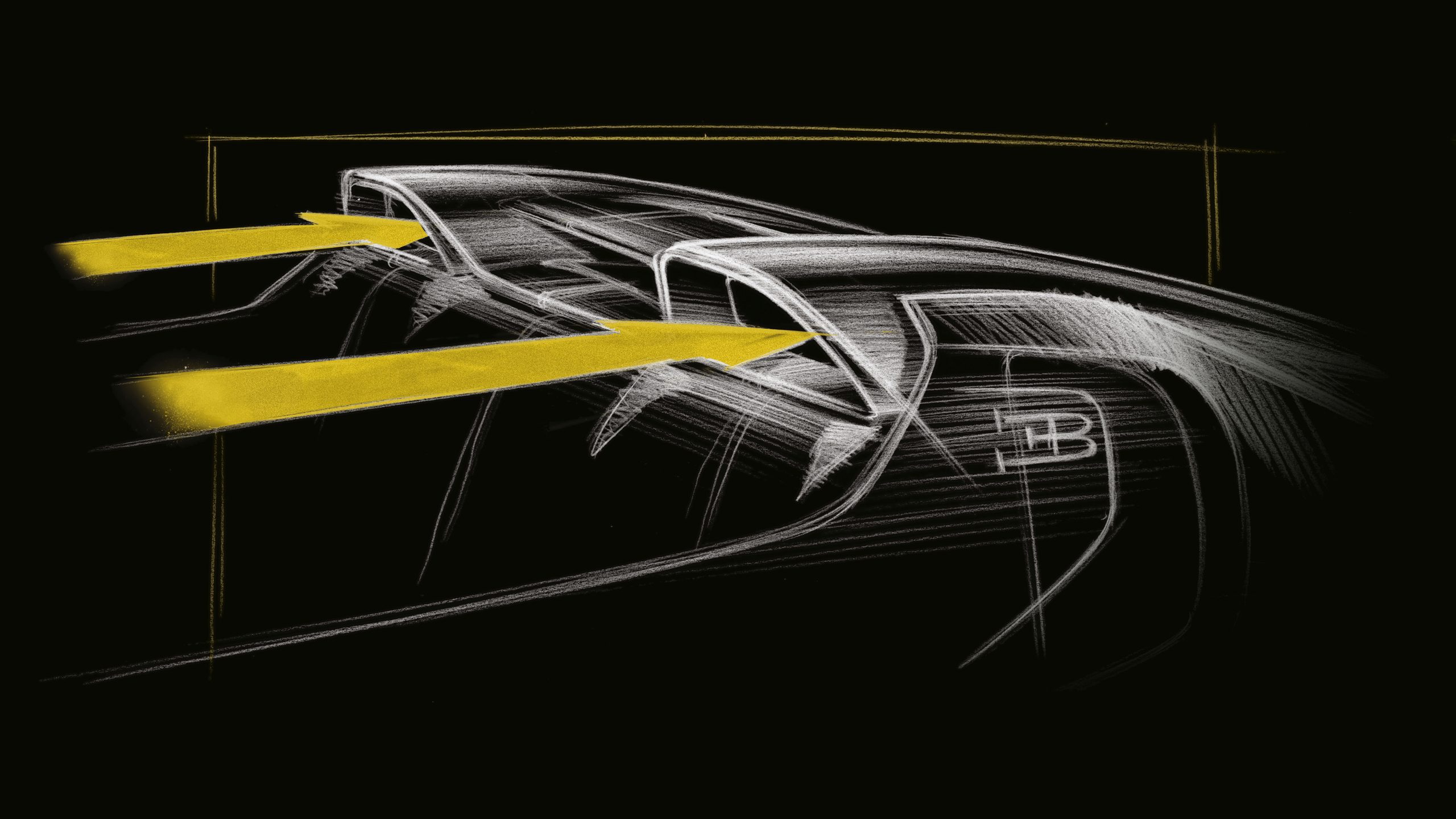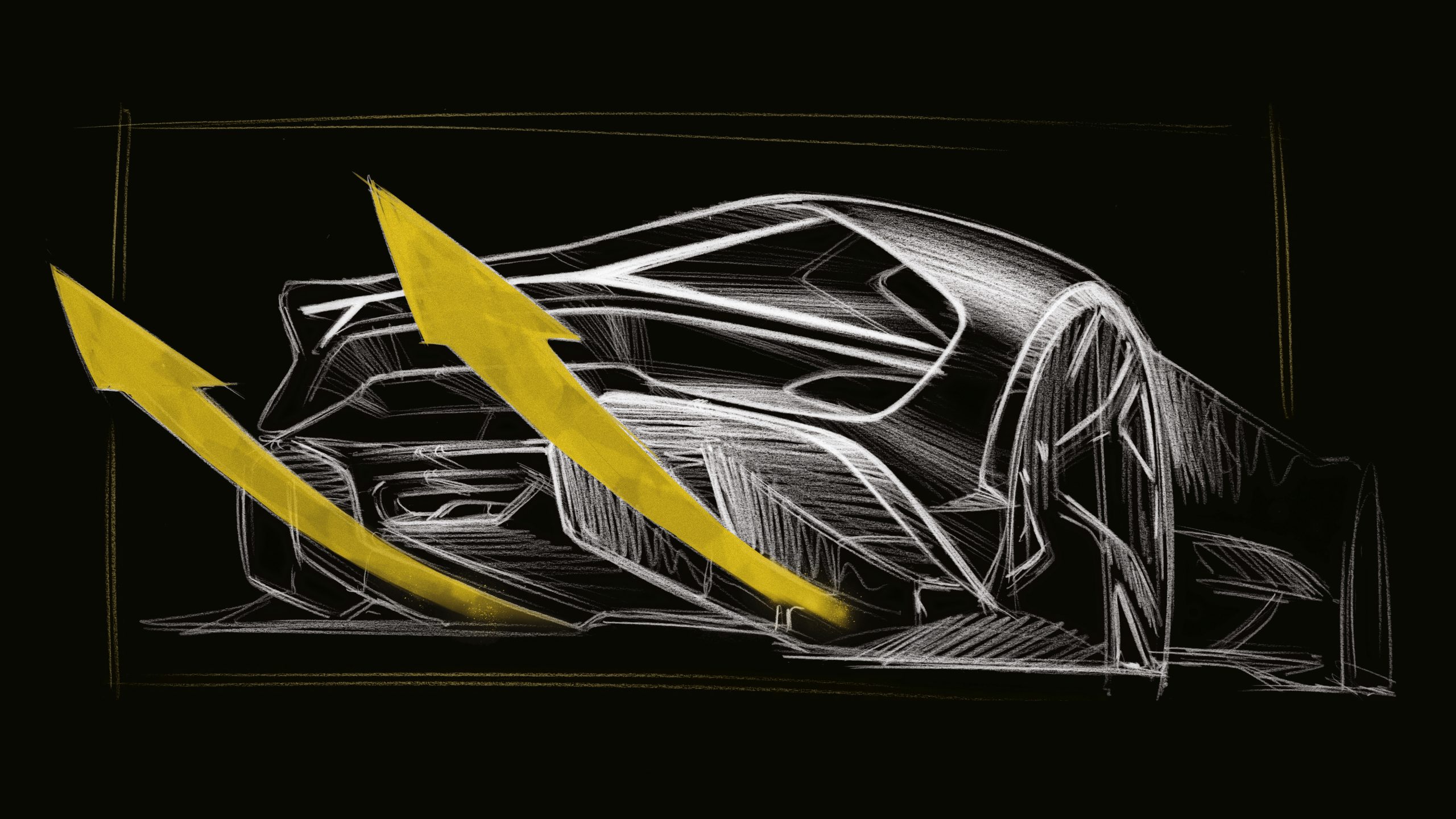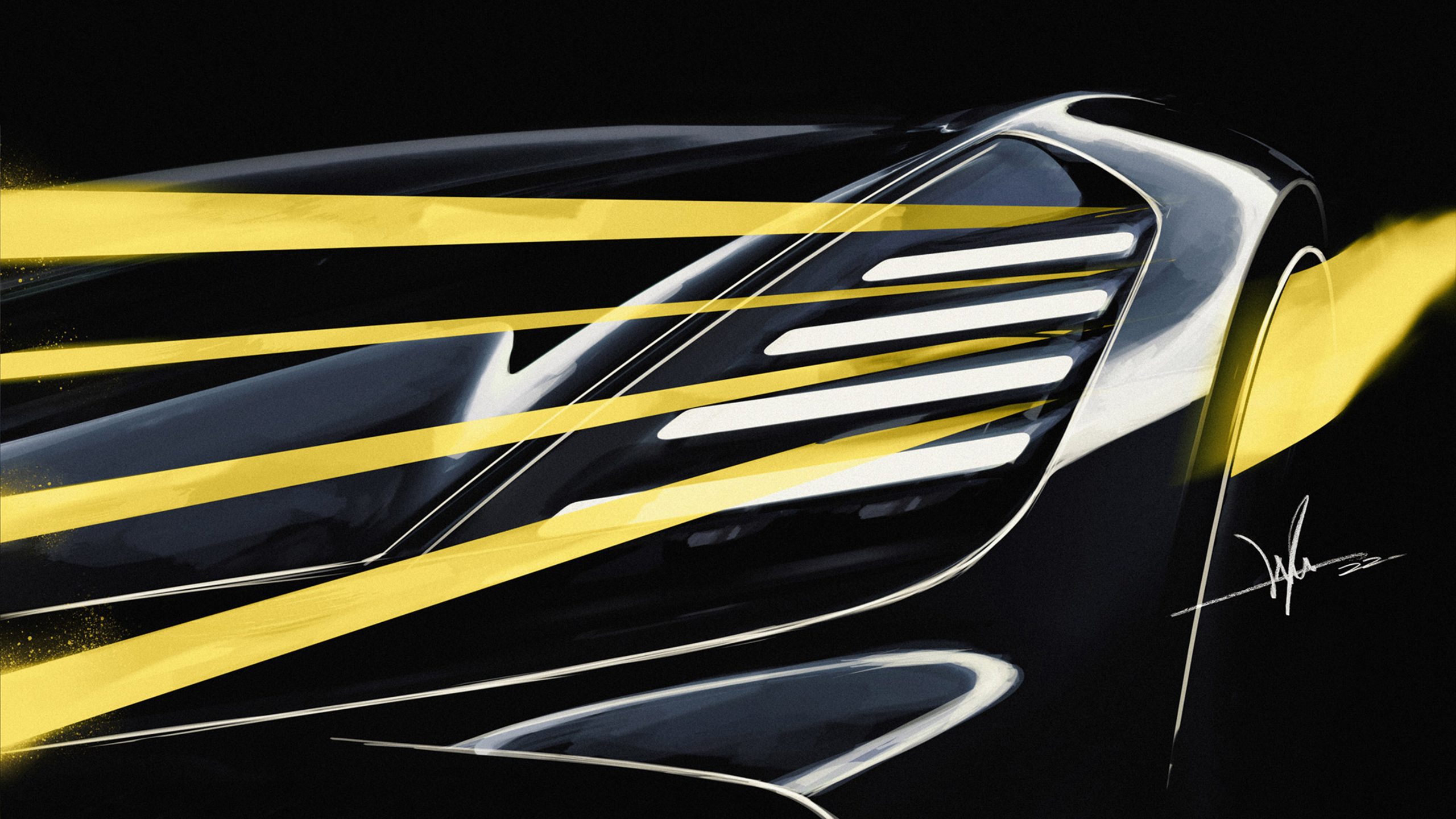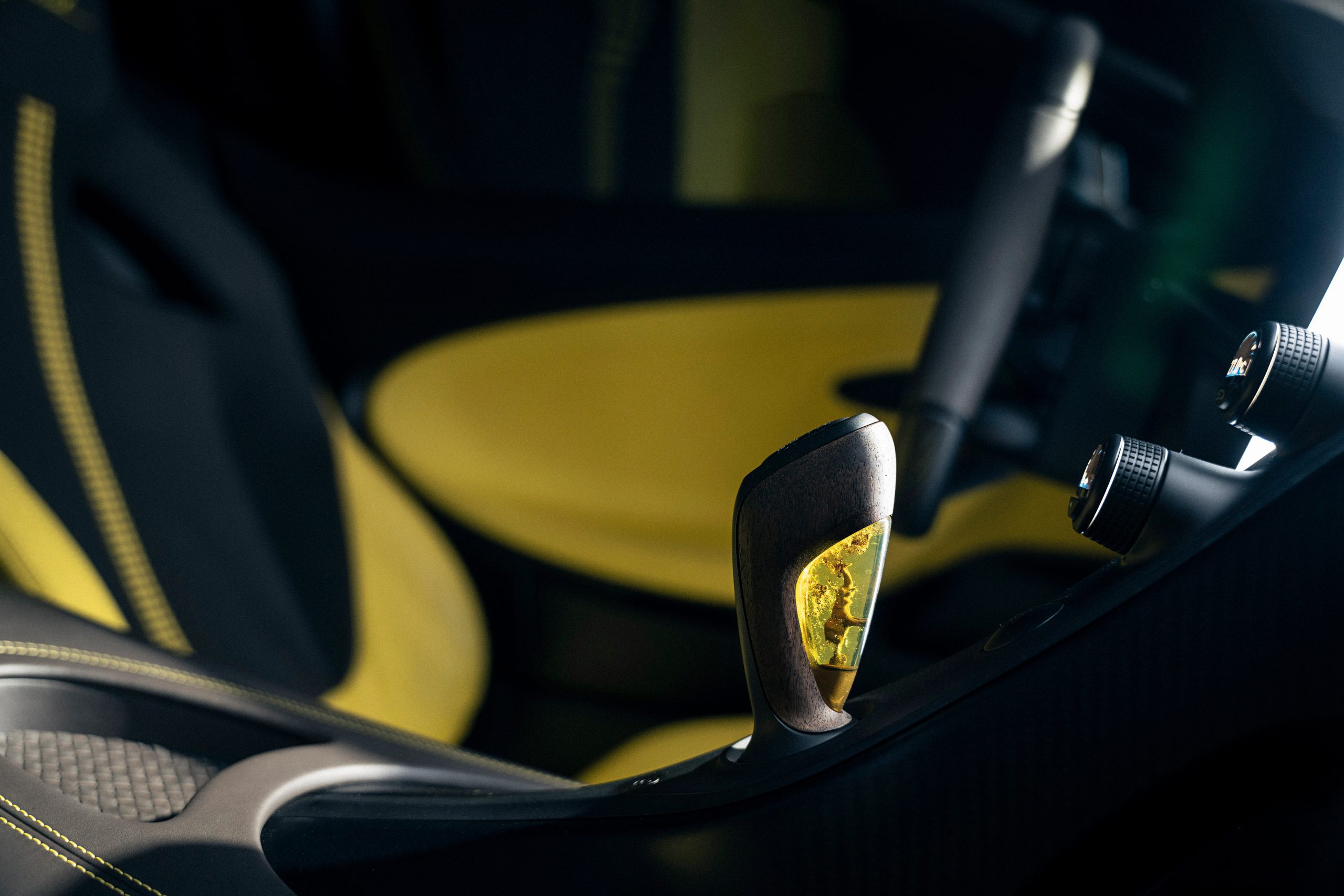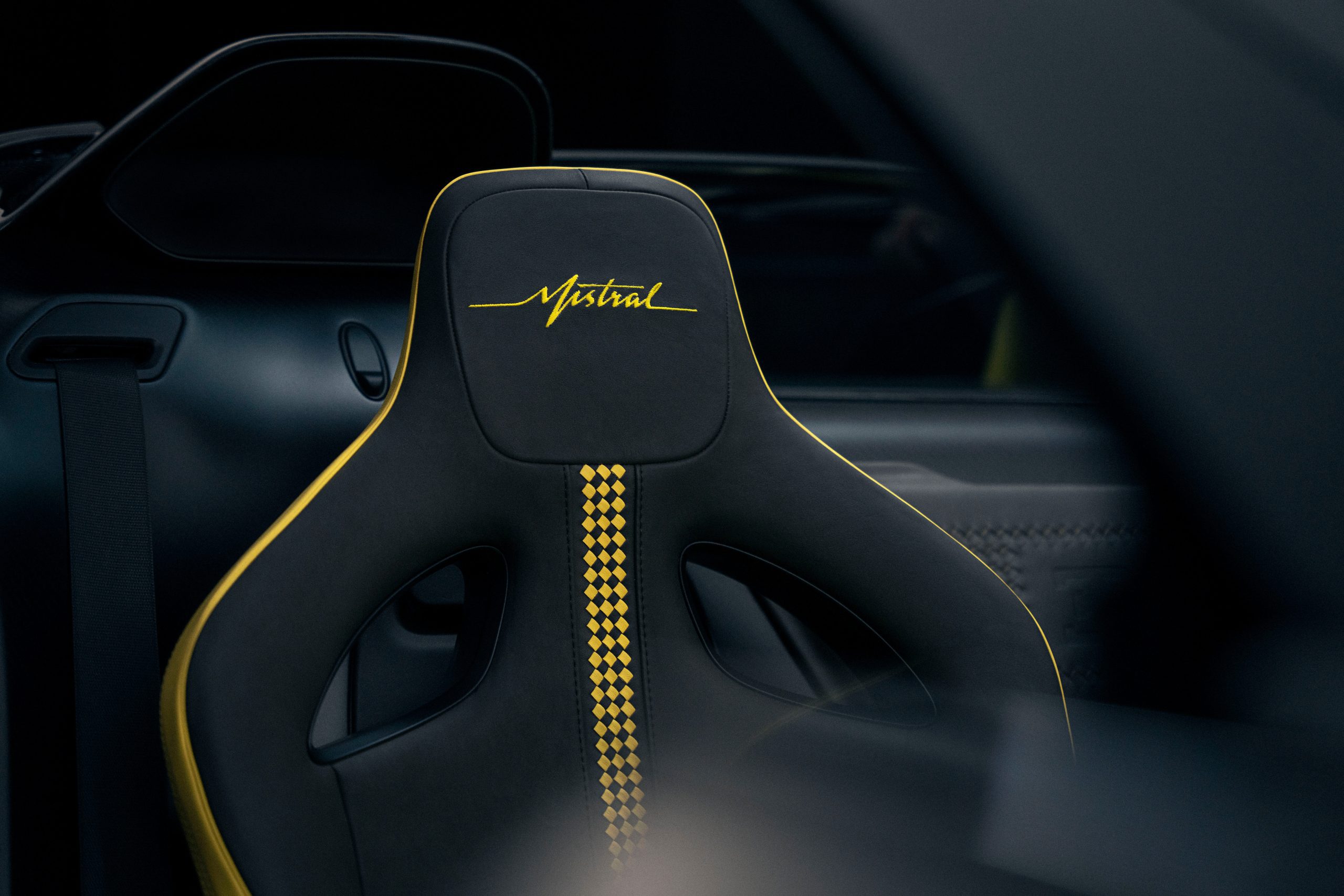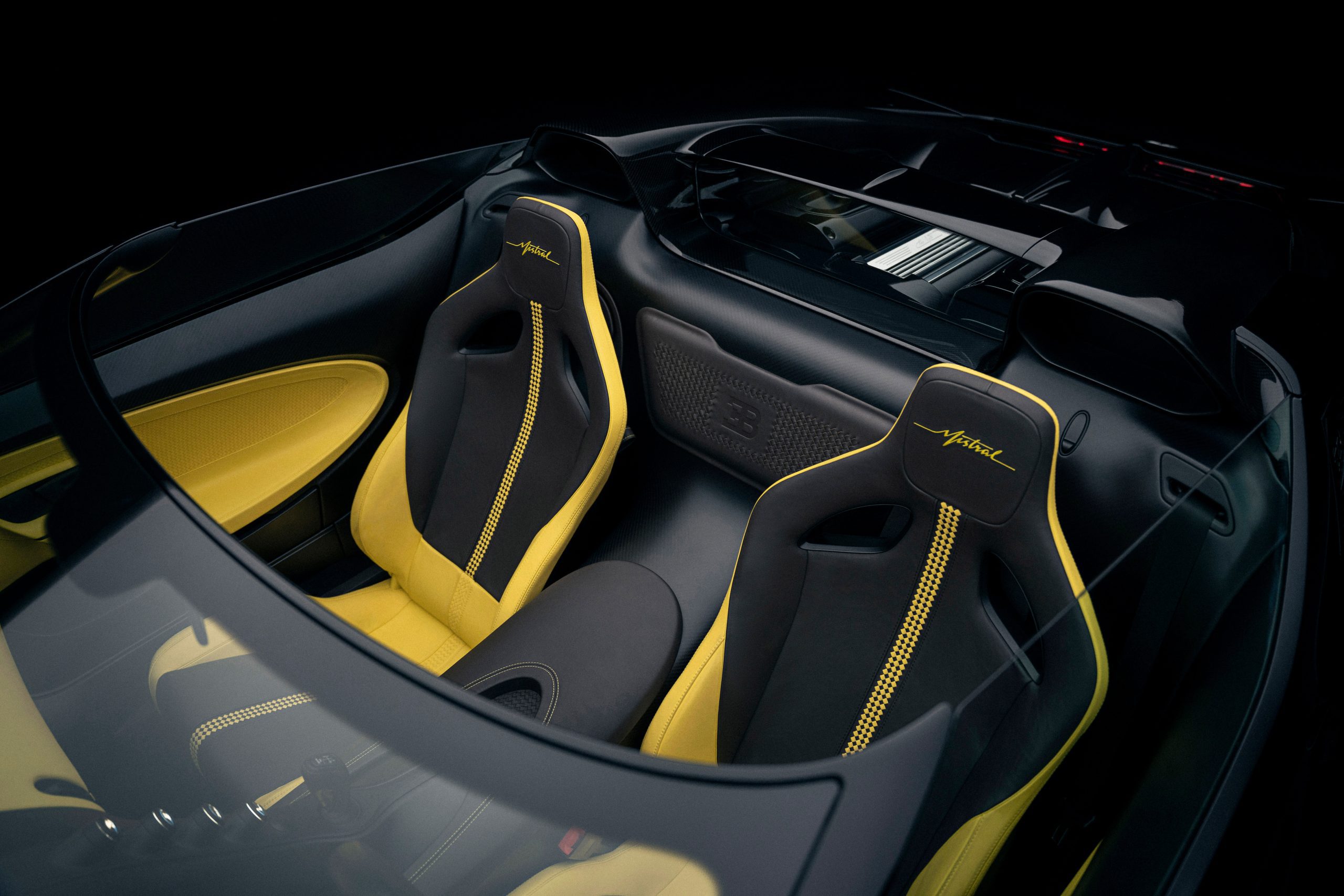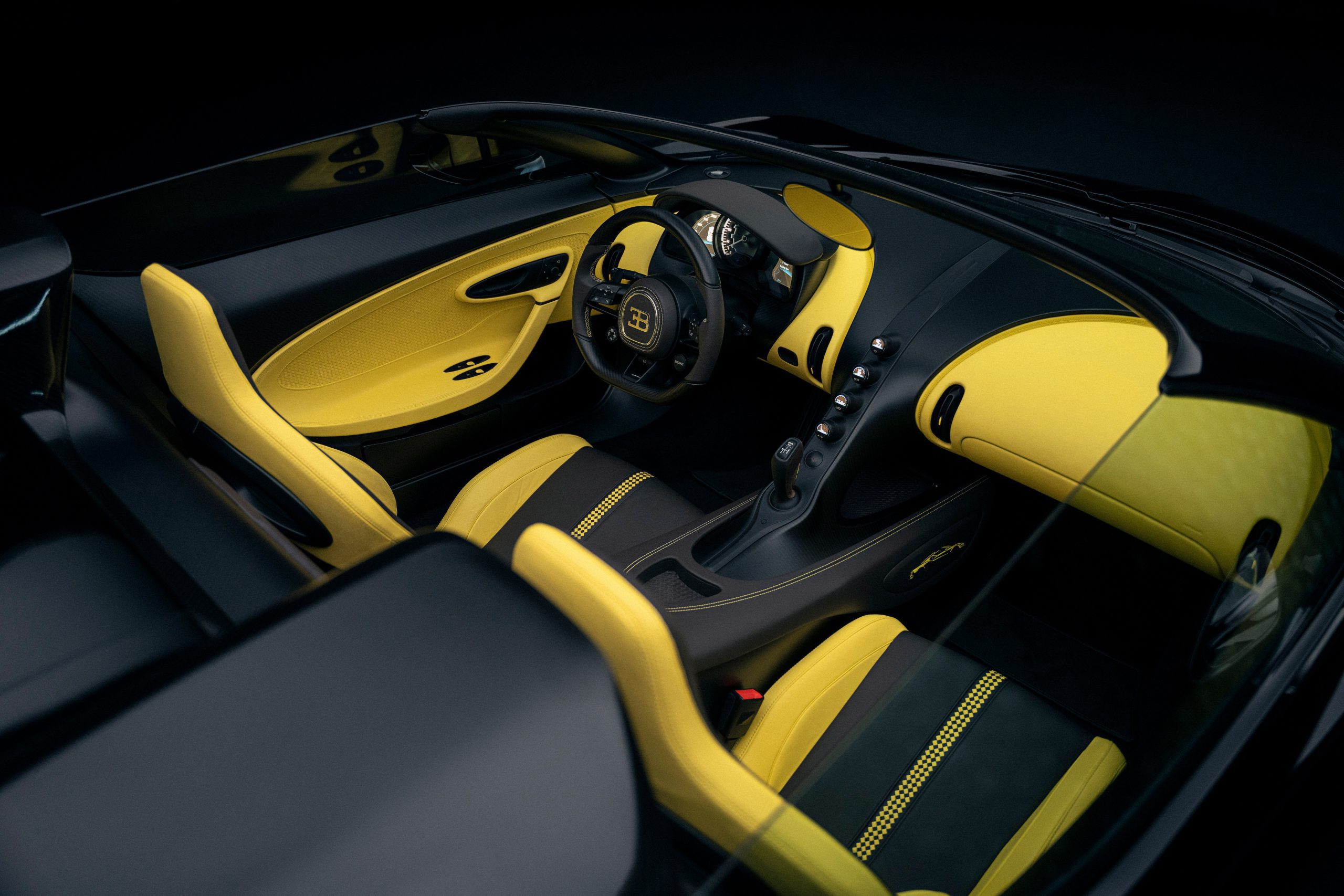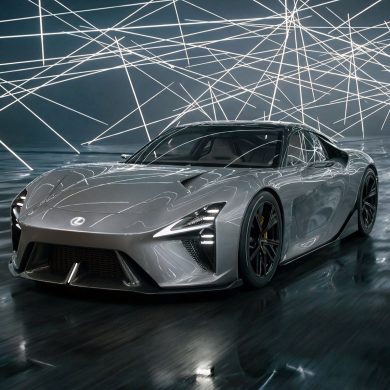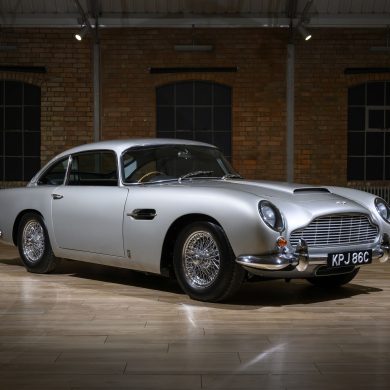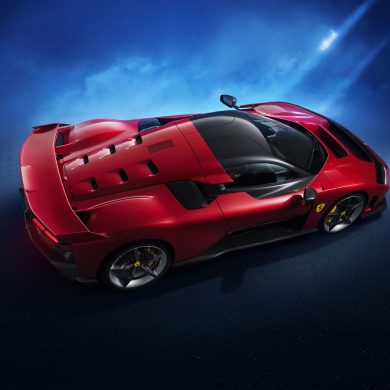Timeless and elegant design, incredible speed, and incomparable performance has always been central to Bugatti’s DNA. The most extreme roadster in Bugatti history, the W16 Mistral, will be the last roadgoing car that would be equipped with the iconic W16 engine. It is truly a masterpiece that brings together the pinnacle of design and engineering.
Bugatti Rimac Chief Technology Officer Emilio Scervo shared, “Managing both thermodynamics and aerodynamics effectively is key to achieving more than 420 km/h in an open top car, even with 1,600 PS from perhaps the most advanced automotive engine ever created. We have to think very carefully about how we shape the W16 Mistral1 to guide air through the car and around the car to delicately balance both cooling and aerodynamics. But, of course, we must do all this with a sense of elegance befitting a Bugatti roadster. A car that is both designed for purpose, but simultaneously evokes a sense of timelessness.”
Bugatti design and engineering teams brought together artistic vision with the mastery of the laws of physics. A new, wider, and more three-dimensional version of the famed Bugatti horseshoe grille can be seen on the front and it enables the high temperature engine radiator to be fully fed completely from one intake so that the two side intakes can purely focus on providing air to the intercoolers.
Two intakes manages the airflow around the front corners. One can be seen by the wheel, and the other perfectly integrated within a new three-dimensional headlamp design. To avoid turbulence and drag which could adversely affect the performance of the W16 Mistral, the air is guided from a high pressure area towards a low pressure area in the wheel well.
Bugatti Rimac Design Director Achim Anscheidt said, “The frontal appearance of the car is dominated by these large intakes, and while recognizably Bugatti, we take a number of cues from the few-off models; Divo2, Centodieci3 and La Voiture Noire4. The windscreen wraps around in an elegant visor motif and the front becomes more vertical to create a design that is both shaped for speed and beauty at the same time.”
A reinvented Bugatti C-line was incorporated in the new roadster profile, which traditionally was on the profile of the Chiron. The design line which previously wraps around the side air intake, is now connected to the top edge of the side windows when then three-dimensionally transforms across the top edge of the windscreen. The creation of the new line was not an easy feat as it was known to be crucial to the visual identity of the W16 Mistral, which was designed to appear to leap forwards.
Achim continued, “To get it right we needed to separate the air intake for the engine from the air intake for the oil cooler. If we kept them together, the intake on each side of the car would have had to have been enlarged out of proportion. So, instead, we hark back to the Veyron 16.4 Vitesse and the Type 57 Roadster Grand Raid by incorporating engine air intakes behind the occupant headrests. This solution is both elegant, functional and safe; the svelte side intakes are proportionally perfect and feed air purely to the oil coolers, while the headrest engine intakes create a huge sense of aural drama, while also working to protect occupants in the event of a rollover.”
All the air that enters through the sides are directed across the two radiators, one placed on each side, over the rear wheels and through the W16 Mistral’s X-shaped tail lights which was an elegant take on the iconic design of the Bolide. The vents open in the triangular negative space between the ‘X’ beams of the light, creating a pressure drop between the side intakes and the outlets at the rear of the W16 Mistral, this helps in controlling the temperature of the engine even under high loads.
Emilio Scervo added, “The W16 Mistral will be capable of 420 km/h in ‘Top Speed’ mode, while still inspiring ultimate confidence in the driver. Supreme control in all conditions and at all speeds is a core part of Bugatti DNA, and to deliver this characteristic, the aero map of W16 Mistral has been carefully defined. Through the synthesis of engineering prowess and design talent, W16 Mistral achieves a delicate balance of drag reduction and downforce through its carefully designed front splitter, aerodynamic underbody and the high energy air flow around the airfoil shaped rear wing when deployed.”
W16 Mistral will run in ‘Top Speed’ mode with the minimum amount of rake on rear wing to reduce drag, but the rear diffuser has been optimized because downforce created by a diffuser comes with very little penalty for drag. The diffuser has been raised to increase both its expansion ratio and rake angle, which then helps deliver the W16 Mistral’s record-breaking top speed with balanced handling, enabling it to keep its reputation as the ultimate roadster.
“The W16 Mistral is a special moment in the history of Bugatti; the kind of car that will be seen on the lawns of top Concours d’Elegance events for decades or even centuries. We created a timeless interior for this car, including the introduction of an intricate woven leather used on newly designed door panels, meticulously tested and produced to Bugatti quality standards. And in a nod to the W16 Mistral’s illustrious forebears, like the Type 41 Royale, the gear shifter – machined from a solid block of aluminum – features a touch of wood and an amber insert with Rembrandt Bugatti’s famous ‘dancing elephant’ sculpture locked within,” concludes Achim.
Bugatti will only be producing 99 examples of the W16 Mistral with deliveries expected to start in. Priced at 5 million euros net, the entire production run of the W16 Mistral is already sold out.


